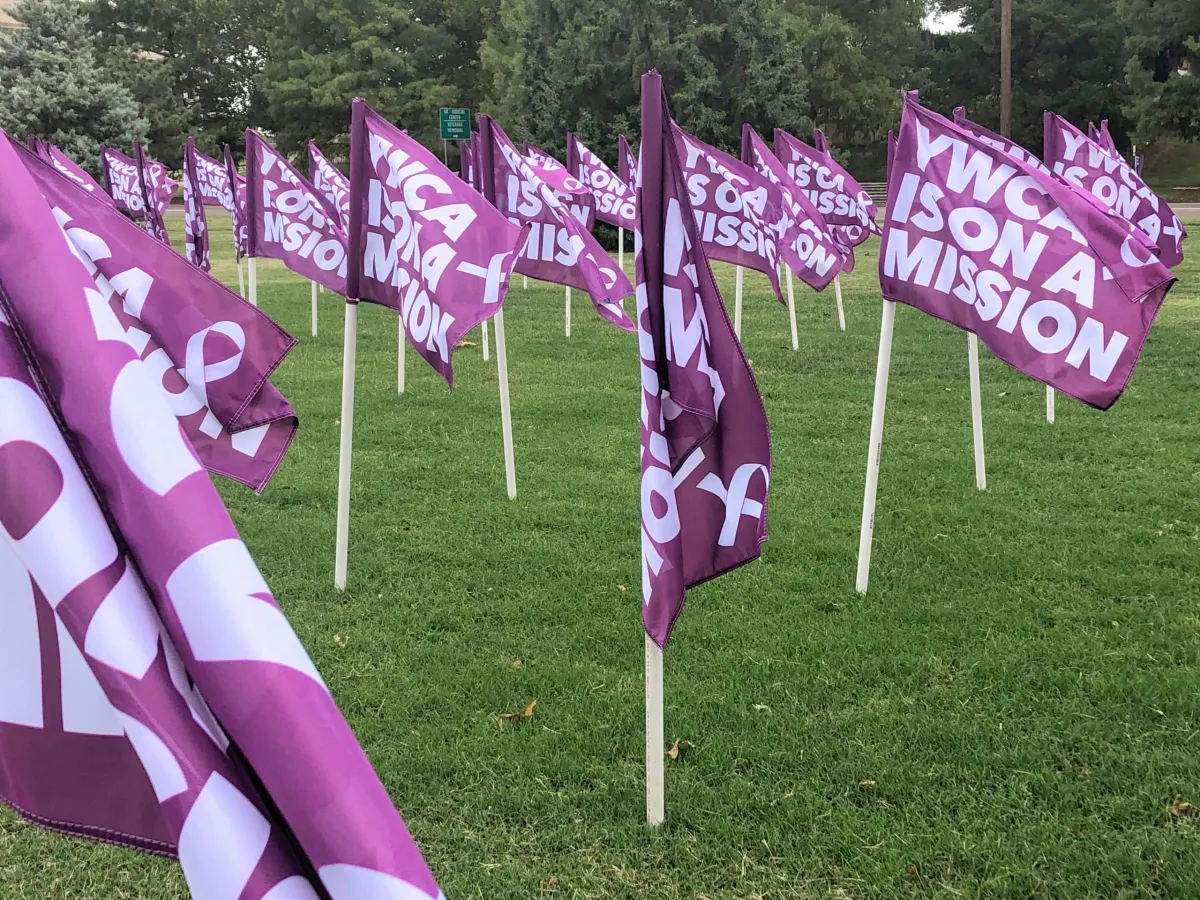Oklahoma Domestic Violence Reports Reach Highest Level in 20 Years
By Whitney Bryen
Published: September 17, 2021
Click here to read the story!
A bloodied 15-year-old with a dislocated jaw told police at his Watonga home that his dad punched him in the mouth because he had done something he shouldn’t have, court records show.
An 18-year-old named David Aguilar chased his sister and mother through their Muskogee home with a saw blade, cutting through a bedroom door where they were hiding and threatening to kill them.
A block from the Lindsay city park where children play at the splash pad and ride bikes at the skatepark, 36-year-old Danual Valerio grabbed his ex-girlfriend by the throat and head butted her, declaring he was going to “kick her ass for real this time,” records show.
These and thousands of other abuses occurred across the state last year amid a worldwide pandemic that left victims even more vulnerable to violence at home.
In Oklahoma, which consistently ranks among states with the highest rates of women killed by men, 2020 produced a record number of domestic violence reports.
Last year, 27,089 abuses perpetrated by family members, current or former signifcant others and roommates were reported to Oklahoma law enforcement agencies, including murder, sex crimes, threats and assaults, according to a newly-released crime report from the Oklahoma State Bureau of Investigation.
That’s the highest number in at least 20 years
About 80% of the reported incidents were assault and battery. Sixty one Oklahomans were murdered by their abuser last year.
Police departments and victim advocates were already pointing to signs of increased family violence within two weeks of Gov. Kevin Stitt’s public health emergency declaration spurred by the spread of COVID-19. Isolation, job loss, financial insecurity, fear and uncertainty fueled anxieties for families.
School and workplace closures forced families together, sometimes in tight quarters, while adjusting to virtual learning and changing job responsibilities. First responders, medical personnel, gas station attendants and grocery store workers continued going to work despite the dangers of contracting the virus.
“The pandemic brought a lot of external stressors, which are not the cause of domestic violence but can make a volatile relationship more dangerous,” said Kim Garrett, founder and CEO of Palomar, Oklahoma City’s family justice center. Palomar provides counseling, food and clothing, helps victims find shelter and assists them with filing protective orders through the courts.
“Our clients already had a lot going on in a violent and volatile home, but now they’re afraid of losing their home,” Garrett said. “And they have less stable income and that really complicated their dynamics.”
In 2019, the center provided 14,084 services to victims and their families. That number more than doubled in 2020 to 31,156, despite more hurdles for victims seeking help. Abusers spent more time at home leaving less space for some to visit or reach out to resource centers.
A few victims who were receiving help at Palomar attempt suicide while they were there, ”which has never happened before,” Garrett said.
Reports of domestic abuse in Oklahoma have increased annually for the past four years. Advocates said more willingness from victims to report abuse is likely contributing to the uptick. However, in 2020, with families spending more time at home, it became more difficult for teachers, colleagues, friends and neighbors to spot and report signs of abuse. That suggests more incidents of violence are responsible for the climbing numbers, advocates said.
Nearly 7 out of every 1,000 Oklahomans experienced domestic violence last year.
Tulsa County saw the highest rate of abuse with nearly 13 out of every 1,000 residents reporting domestic abuse
High rates of family violence have plagued the Tulsa metro area for years. Tracey Lyall, CEO of Domestic Violence Intervention Services in Tulsa, said the numbers are too consistent to be an anomaly at this point but it is unclear why Tulsa County is so vulnerable.
Lyall, who has held her position at the nonprofit since 2007, has a degree in psychology and is a licensed social worker. She offers a few complicating factors that could fuel Tulsa’s rate of domestic abuse, including that police shortages and the need for more detectives to investigate domestic violence cases make progress difficult.
And there’s no dismissing poverty, which plagues the north Tulsa neighborhood where the nonprofit Domestic Violence Intervention Services is located, Lyall said.
Yet the question remains unanswered despite efforts by area advocates and experts.
Muskogee, Kay, McCurtain and Garvin counties also recorded high rates of domestic violence. Oklahoma County, the state’s largest and most populous county, ranked 20th among the state’s 77 counties.
Last year, accountability for abusers increased as elected officials took up the issue through legislation. But it also took a hit as courthouses adjusted to new COVID-19 protocols.
Until 2020, domestic abuse charges were classified non-violent by Oklahoma law. This resulted in less time served by offenders and added to the stigma that domestic violence is a private, family problem rather than a matter for the courts.
During the legislative session in May of 2020, lawmakers added four domestic abuse charges to the state’s list of violence crimes, which means offenders are required to serve at least 85% of their sentence. Those charges are domestic abuse by strangulation, domestic assault with a dangerous weapon, domestic assault and battery with a dangerous weapon and domestic assault and battery with a deadly weapon.
Courts order hundreds of abusers to attend batterer intervention programs each year as an alternative to prison. In 2020, statewide domestic violence dockets where these offenders are required to report monthly on their progress were paused for months under COVID-19 restrictions. It is unclear how many offenders failed to complete the program due to the delayed dockets.
Justice has not yet been decided for the beaten teenager in Watonga, whose father’s case remains ongoing.
In Muskogee, Aguilar pleaded guilty to a misdemeanor and was sentenced to supervision by the district attorney and $750 in fines and fees. His felony charge was dismissed.
And in Lindsay, Valerio, pleaded no contest to three felony charges and was ordered by the court to attend a 52-week batterer intervention program, complete two years of supervision by the Department of Corrections and pay $850 in fines and fees.
Court closures also delayed divorce and child custody proceedings. Protective orders continued virtually but the process took longer to complete delaying protection for victims.
“We know we lost people during that time,” Lyall said. “We lost offenders in batterer intervention programs, as well as survivors. We just don’t know how many and we may never know.”


